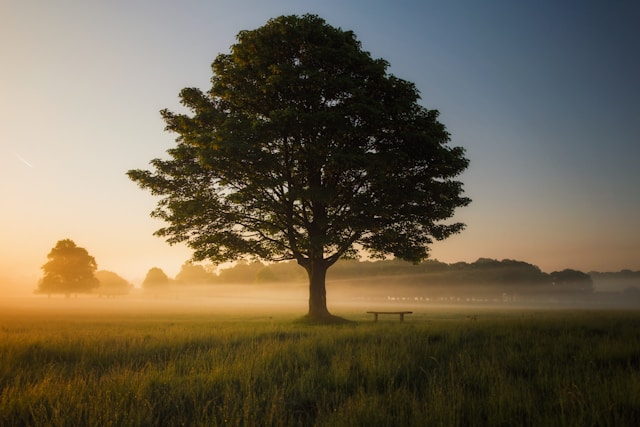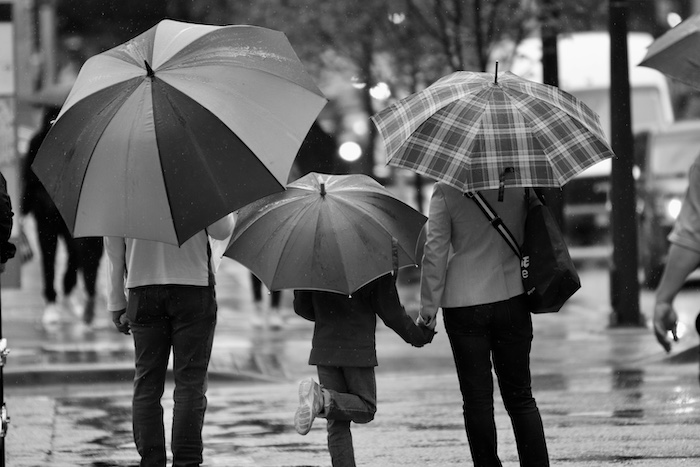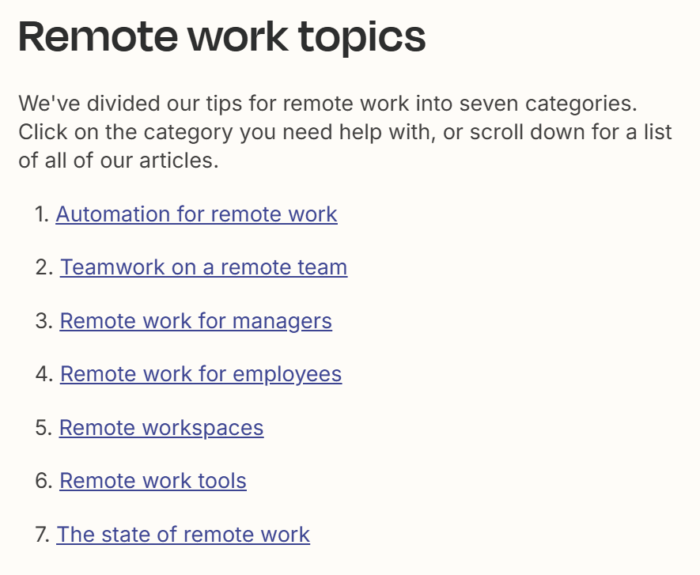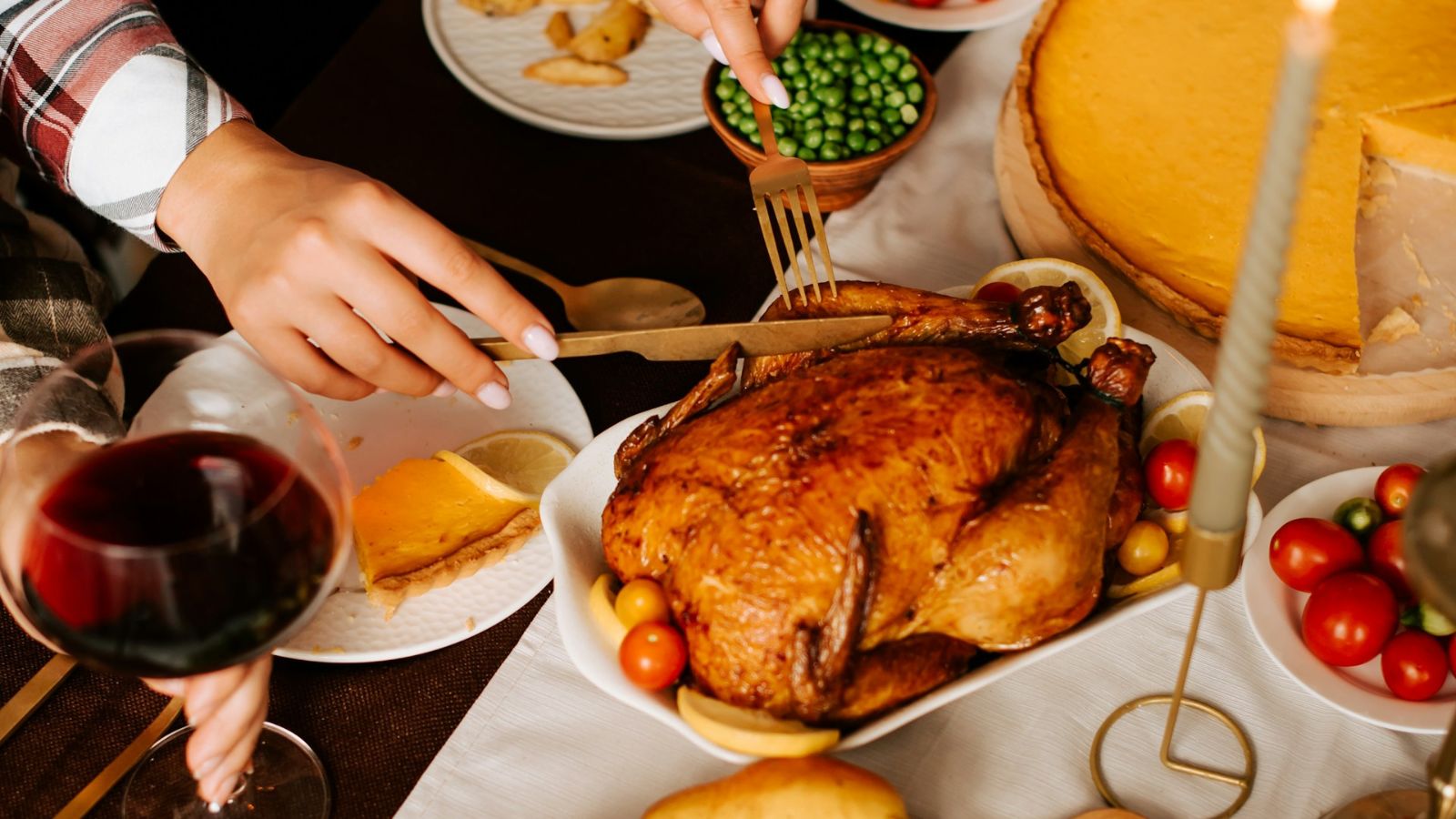Ecological Compassion
A Zen priest and teacher on how we can exist within the uncertainty of climate change The post Ecological Compassion appeared first on Tricycle: The Buddhist Review.

A Zen priest and teacher on how we can exist within the uncertainty of climate change
By Christian Dillo Apr 08, 2025 Image by Simon Wilkes
Image by Simon WilkesNature is not the green stuff over there, something to either exploit or protect. Nature and human behavior are an undivided activity. We can only carry our situation forward if we are willing to evolve into a new, still unknown collective behavior—a truly novel way to live in a less harmful way. We need to find a way to live that truly benefits all beings. We need a spiritual revolution.
Hyperobject problems, problems we cannot bring before us as an object, cannot be solved. They must be lived. They evolve us as we carry them forward from the present into the present. I believe the only way they can be lived is through the unique felt sense that they produce in each individual. In my work with students, I encourage them to first and foremost make space for the “crummy feelings” that inevitably arise as they face the severity and enormity of the ecological crisis. Joanna Macy, the distinguished Buddhist environmental activist, has emphasized that our “pain for the world” is an adequate expression of the historically unprecedented situation in which humans are unintentionally destroying the biosphere. We need to learn to include this pain—even to honor it, as Macy suggests—and not exclude it from our process.
What I call the “crummy feeling” is an ever-changing felt sense that encompasses all the paradoxes, blockages, dead ends, frustrations, motivations, and positive visions that are part of our perception of the ecological crisis. At times, the felt sense can appear as grief, despair, or depression. At other times as anger, optimism, determination, or even joy. Emotions are pretty coarse framings; the actual information sits underneath them in sensations at once more vague and precise. The dimensions of the global ecological crisis are immense, but miraculously they show up in our individual bodyminds as this felt sense now—as exactly that complexity we are able to respond to at this time.
From a Buddhist point of view, what matters the most is that we remove our resistance and develop the courage to carry the present forward into the present. We don’t deny the possibility of civilizational collapse or human extinction, but grounded in the actuality of this very moment, it both does and doesn’t matter what the predictions are. When we take the predictions to heart and respond to them, this can lead to a situation in which the predictions don’t come true. Fundamentally, we don’t know what will happen. What we do know, if we have opened up our minds sufficiently to feel them, are the imperatives of our particular, entangled situation—imperatives to which we feel we must respond. As Fayan said, “All of you just do what is appropriate to the moment!”
Dogen envisions the world as a moment-by-moment birthing and dying process. He says that liberation is to be free from birth and death in the midst of birth and death. He explains, “There is detachment from birth-and-death and penetration of birth-and-death. Such is the complete practice of the great way. There is letting go of birth-and-death and vitalizing of birth-and-death. Such is the thorough practice of the great way.”
For most of us, liberation means to be free from problems, constraints, and unpleasant feelings and to improve our lives to meet our preferences. In contrast, as we discussed, Buddhist liberation requires us to give up any resistance to or grasping of our experiencing at this time. As a practice, this means acceptance, acceptance, acceptance. Such radical acceptance includes the acceptance of our personal death, the potential death of human civilization, and possibly the death of vast regions of the biosphere. At each moment, we acknowledge through bodily anchored, nonreactive awareness what is. We make space for it. We are hosting the actuality of birth-and-death, appearance-and-disappearance. When thoughts and emotions with a grasping or resisting quality arise in reaction to appearance-and-disappearance, we make space for them too and refrain from identifying with them.
This is where most Buddhist practitioners’ vision of practice realization stops. Such personal liberation in the form of detachment and letting go is difficult to master. Yet when we stop there, our practice can assume a flavor of disengagement from the cries of the world, or it can resemble a victim-like passivity. Dogen invites us to go a step further. The qualities complementary to detachment and letting go that Dogen names are penetration and vitalizing. When we are able to be freely aware of what appears, we penetrate our experiencing more fully. What we see and hear and think “out there” as the world is not separate from what we feel “in here” as our self. It is undivided activity. Intimate resonance. Mutual embodiment. Detached, yet not separate. Penetrating. Vitalizing. We are imbuing the world with our unrestricted aliveness, and we are enlivened by its presence. We are vitalizing our being-in-the-world and the world-in-our-being.
Now, acting on behalf of others and acting on our own behalf are undivided. Such accepting vitalization of our experiencing does not preclude response-ability, it is the birthing of it. It is an expression of our aliveness, even if what we are responding to is deeply disturbing and our response is disturbingly limited. Dogen says, “The undivided activity of birth and death is like a young person bending and stretching, or it is like someone asleep at night searching for a pillow.” It doesn’t have to be anything dramatically big.
Do Dogen’s call for vitalizing engagement and Fayan’s admonition to do what is appropriate to the moment require us to develop a special ecological mindset? I find it valuable to remember that I am always already ecological. I am always already a resonant body. I’m always already the undivided activity of everything-all-at-once, always already in mutual interaffection. It’s important to take a moment and feel that as fully as possible with regard to the progressing destruction of the biosphere. Everything that lives must die eventually. The fundamental fragility of everything makes no exception for even enormous things like the Arctic ice shelf. It is melting as you are reading these lines.
The future is fundamentally uncertain. We really deeply don’t know what will happen. We don’t know if it is too late. It might be. The tropics might become uninhabitable. There might be even more massive migrations of climate refugees. Or, as a kind of mixed blessing, an unexpected world economic crisis might occur that suddenly and sharply reduces carbon emissions the way the COVID pandemic did, only more so. Or perhaps we will manage to steer ourselves through an energy transition that avoids both economic and ecological breakdown.
Many who study global warming much more in-depth than I do think it’s increasingly unlikely we can avoid catastrophe. Others devote themselves to stubborn optimism. Putting aside these cognitive overlays, in my resonant bodymind, right now, what is the imperative I feel I’m able and willing to respond to?
When we realize that being fully alive is to be fully alive with and through others, the distinction between selfishness and altruism falls away.
A friend of mine was responsible for organizing the participation of nonstate actors in the 2021 United Nations Climate Conference in Glasgow. I admire his commitment to work toward a transformation of global capitalism and a decarbonized global future. He invited me to share my Zen practice with members of his international Climate Champions team in the hope that they may stay more “grounded” while doing their challenging work. In our Zoom sessions, we worked on bodyfulness and the transformation of mental postures. Personally, at an earlier point in my life, I considered but never chose to be active in the field of environmental politics. Instead, I decided to practice Zen in a small community in the mountains. Later, when I came to have a leadership role in the community, I worked on a solar project that reduced my Zen community’s carbon footprint by 75 percent and developed Wild Dharma programs to practice resonance with the more-than-human world.
A fellow Zen teacher participates in and advocates for civil disobedience. One sangha member with significant financial resources is directing all of his giving to support the Democratic party in the United States and their Green New Deal agenda, another sangha member with far fewer resources supports domestic conservation efforts. Another friend specializes in financing industrial solar projects. A student of mine is getting involved with the local recycling process. And then there is my friend, a single mom, who’s practice is to manage her overwhelm and anxiety to the best of her ability so she can go to work and take care of her children. She has a vow to avoid, as much as possible, buying anything made of plastic. Which of these responses are appropriate?
Zen doesn’t tell us what to do. What we are able and willing to do in our current life circumstances emerges from our practice of bodyfulness and our growing realization that “throughout the body is hands and eyes.” When we realize that being fully alive is to be fully alive with and through others, the distinction between selfishness and altruism falls away. Our ecological era presents this realization as an urgent imperative. Today, forgetting the self and being actualized by the ten thousand dharmas means to let go of anthropocentrism in all its psychological, religious, and economic forms. Our body of resonance and our care must include but also transcend the human realm. It is only when our aliveness is resonant with and attuned to all beings—human, nonhuman, and even nonsentient beings—that our compassion becomes truly all-sided and ecological. We practice it with what is right before our eyes.
◆
From The Path of Aliveness: A Contemporary Zen Approach to Awakening Body and Mind by Christian Dillo. © 2022 by Christian Dillo. Reprinted in arrangement with Shambhala Publications, Inc. Boulder, CO
![]()
Thank you for subscribing to Tricycle! As a nonprofit, we depend on readers like you to keep Buddhist teachings and practices widely available.

 JaneWalter
JaneWalter 
































